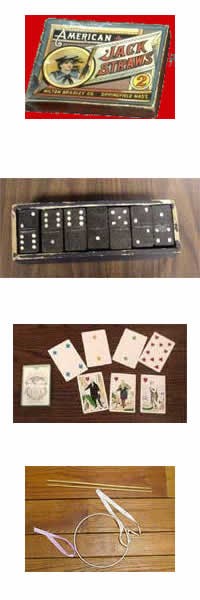|
The following are tools or props which could be used at a children's station. Descriptions of these and other toys and games are included on subsequent pages. 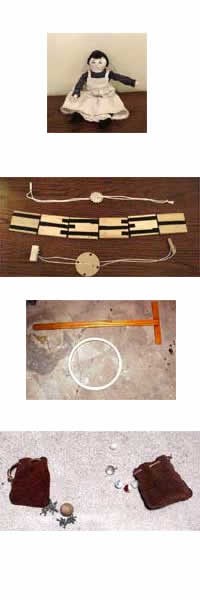
Dolls
Jacob's Ladder and Buzz Saw/Whirligig
Hoop and Stick
Jacks and Marbles
Work and School The first four props were used in various chores assigned to the children. 
Bed Tick and Prairie Hay - People slept on ticks or mattress covers filled with hay. The hay was changed regularly and one of the chores that children were assigned to do was to change the hay. 
Butter Churn - This prop represents one of many chores that children were expected to help out with. Other household chores included helping with the cooking, soap and candle making. 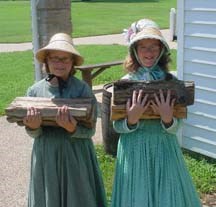
Wood and Kindling - Gathering firewood and tending fires was another of the many chores that children of the time period engaged in. 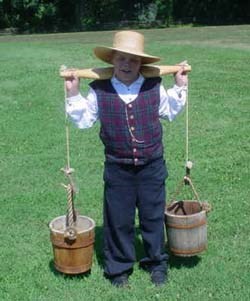
Yoke and Buckets - To carry water from the well or the river, children would have used a yoke so that they could carry two buckets at once. 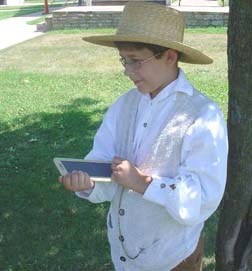
Slate and Slate Pencils
Slates were like small, portable blackboards for students to write on. They were widely used in the United States when paper was scarce and expensive. Even though paper had become commonplace by the late 1800s, it was still considered too expensive in rural areas for the demands of children in school. Up until 1900, many children in rural schools still used slates for writing their assignments.
Slates were ideal for work that didn't need to be saved like math homework or practicing one's writing. Students might practice a lesson in class and take it up to the teacher to check. The lesson could then be erased and the student would work on the next assignment. Slates were easily cleaned and, unlike paper, nothing was thrown away or wasted.
There were special pencils made for writing on slates. These pencils were themselves made from slate and were sold in boxes of six or twelve. Often, the pencils had a paper wrapping on them like crayons do today. If the slate pencil broke, the pieces could still be used for writing. *
*The information on the slates for this page came from the Blackwell History of Education Museum's website. Used by permission. |
Last updated: July 30, 2016

